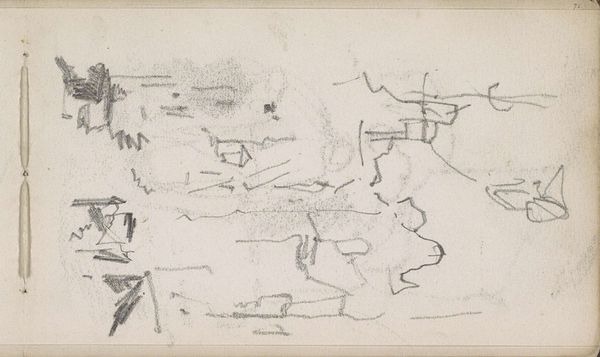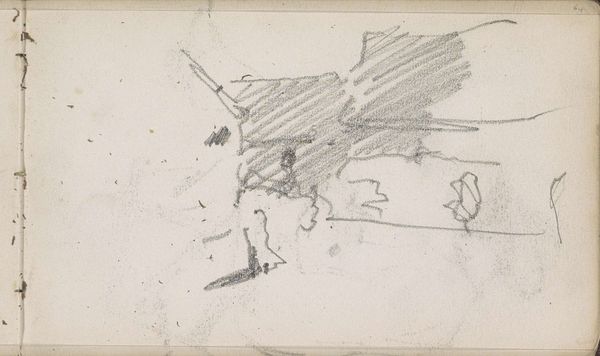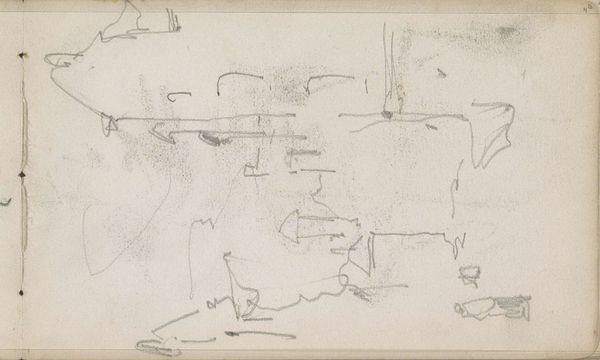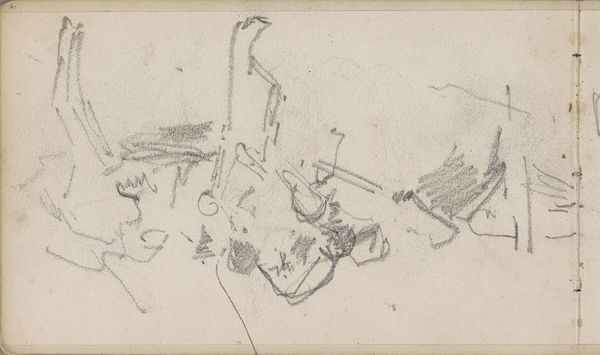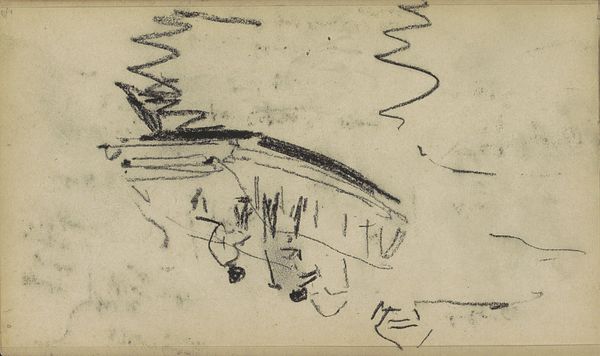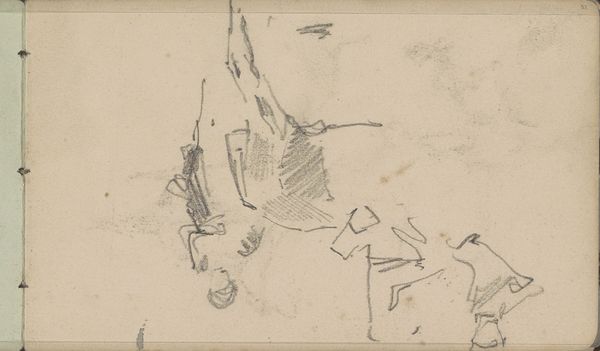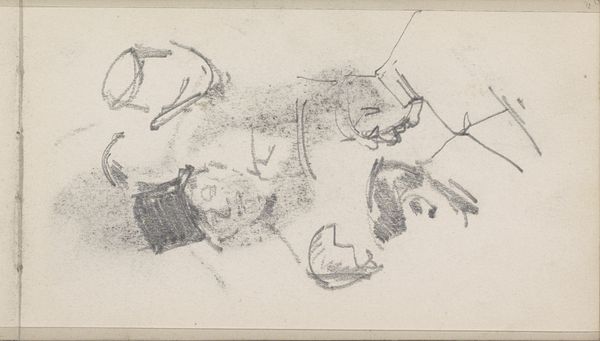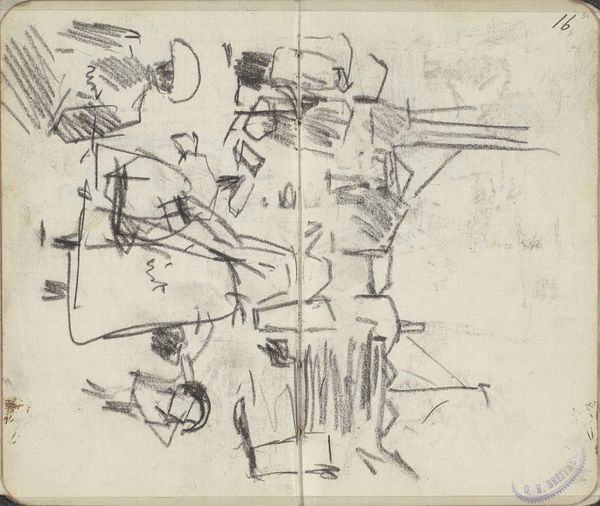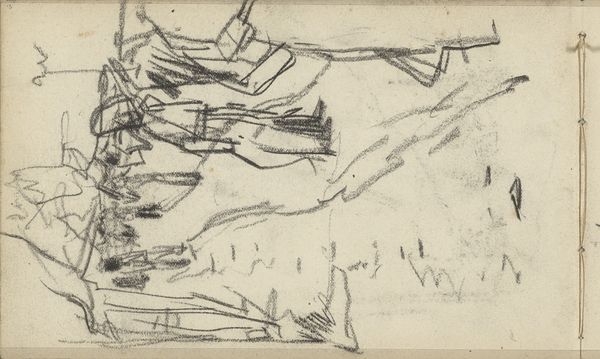
drawing, pencil
#
drawing
#
impressionism
#
pencil sketch
#
landscape
#
pencil
#
abstraction
Copyright: Rijks Museum: Open Domain
Curator: Breitner's "Landscape with Buildings, Possibly a Farm," dating from around 1881 to 1883 and held here at the Rijksmuseum, offers an interesting study in impressionistic sketching. Editor: Interesting is one word for it. My immediate reaction is...fragmentary. Like a half-remembered dream of a place. I feel like something's missing or maybe intentionally obscured. Curator: Precisely. This is where historical context becomes crucial. Breitner, though known for his later paintings of Amsterdam, was clearly experimenting here. This isn't a finished product; it’s more of a study, perhaps preparatory work for a larger painting, displaying his developing style. Editor: Yes, I see what you mean. You can sense the hand at work, figuring out how to capture the essence of this location with simple pencil strokes. The paper becomes as important as the markings themselves; it's all process. How was this work received, displayed, sold during his lifetime or later on? Curator: Good question. Breitner, despite associating with the Amsterdam Impressionists, was a somewhat controversial figure. This more abstract piece likely would not have found the wide audience that his cityscapes did. Sketches were seen, broadly speaking, as less valuable within a strict art market, especially one governed by academic principles. The labor involved was downplayed, but he seemed interested in sketching to quickly grasp a scene. Editor: That's insightful. It feels less like observation and more like a material investigation. I'm drawn to that dark patch—the house perhaps. The way it disrupts the flatness, pulling you in, feels very contemporary. Curator: And that aligns perfectly with the changing perception of the landscape genre in that period. Instead of grand vistas intended to inspire awe of nature and the role of society in improving upon it, Breitner's art reduces things to something intimate, almost personal. This has, subsequently, appealed to a broader public than his commissioned city work, later on. Editor: Looking closely, it feels less like an exercise in abstraction and more like something unresolved, open-ended. And it also strikes me that this could be one of a few almost identical drawings or even paintings; I imagine he produced many with almost imperceptible differences to get a scene and composition right. Curator: That’s certainly possible, knowing his practice. It invites us to consider, what does it mean to finish a piece? Does its public display affect its definition as a commodity? I appreciate you making me rethink this piece again. Editor: And thank you for shedding light on its historical and cultural implications. I'll look differently at Breitner next time around.
Comments
No comments
Be the first to comment and join the conversation on the ultimate creative platform.
